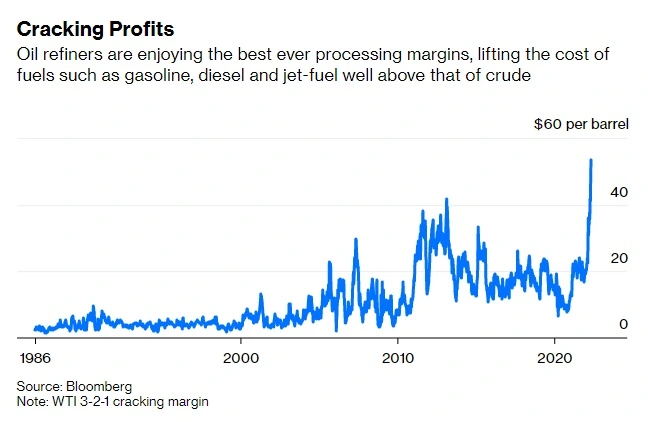
Right now, the traditional relationship between crude and refined products is broken. WTI is anchored around $100-$110 a barrel, suggesting that — in barrel terms — gasoline, diesel and jet-fuel prices shouldn’t be much higher, once you add the average refining margin.
In reality, they are a lot more expensive. Take jet-fuel: in New York harbor, a key hub, it’s changing hands at the equivalent to $275 per barrel. Diesel isn’t far away, at about $175 a barrel. And gasoline is at about $155 a barrel. Those are wholesale prices, before you add taxes and marketing margins.
…Oil refineries are complex machines, capable of processing multiple streams of crude into dozens of different petroleum products. For simplicity’s sake, the industry measures refining margins using a rough calculation called the “3-2-1 crack spread”: for every three barrels of WTI crude oil the refinery processes, it makes two barrels of gasoline and one barrel of distillate fuel like diesel and jet-fuel.
From 1985 to 2021, the crack spread averaged about $10.50 a barrel. Even between 2004 and 2008, during the so-called golden age of refining, the crack spread never surpassed $30. It rarely spent more than a few weeks above $20. Last week, however, the margin jumped to a record high of nearly $55. Crack margins for diesel and other petroleum products surged much higher.
From 1985 to 2021, the crack spread averaged about $10.50 a barrel. Even between 2004 and 2008, during the so-called golden age of refining, the crack spread never surpassed $30. It rarely spent more than a few weeks above $20. Last week, however, the margin jumped to a record high of nearly $55. Crack margins for diesel and other petroleum products surged much higher. – Bloomberg


